Introduction
Understanding the beauty and value of physical development is vital in a screen-dominated culture. Physical development matters whether you’re a parent concerned about your child’s health, a health fanatic looking to improve your fitness, or an instructor trying to produce well-rounded kids. This thorough book covers essential physical development with insights, suggestions, and resources for your requirements.
The Foundations of Physical Development
We change physiologically from birth. Bones, muscles, and biological systems mature. Parents chart first steps and bike rides. Health nuts enhance strength, flexibility, and endurance. Teachers encourage intellectual and physical growth.
Understanding the fundamentals is critical. Early childhood emphasises crawling and jumping. Fine motor skills like writing and buttoning improve with children. Parents and educators may promote development by recognising these periods.
Recognising each person’s growth pace is vital, not just understanding. No two kids usually hit milestones simultaneously—adult physical development has different speeds. Respecting individual development paths helps us support and encourage one another.
Importance of Nutrition in Physical Growth
Physical growth requires nutrition. Parents may help their children develop by providing a balanced diet of fruits, vegetables, proteins, and grains. Calcium and vitamin D are needed for bone health, whereas proteins are required for muscle growth.
Healthy people concentrate on how diet promotes exercise. A diet customised to their needs—building strength, endurance, or weight—is essential. Energy and healing come from a balanced diet of carbs, proteins, and lipids.
Educators also promote school nutrition. They help kids stay healthy by encouraging good eating and teaching them about balanced meals. Understanding nutrition and energy levels may improve learning settings.
The Role of Exercise in Physical Development
Exercise is essential to physical growth. It helps kids build muscle, bone, coordination, and health. Running, climbing, and swimming build motor skills and an enjoyment of movement.
Health enthusiasts exercise daily to enhance cardiovascular health, strength, and flexibility. Weight training and yoga are structured routines that improve fitness and target specific objectives.
Teachers may promote mobility by including physical activities in their courses. Playtime, PE, and active learning promote concentration, cognition, and physical development. Teaching pupils to be active promotes lifetime health.
Understanding Milestones and Growth Spurts
All people go through growth spurts at various times. Parents commonly notice these bursts throughout infancy, childhood, and adolescence. Recognising these periods ensures healthy development with proper diet and support.
Health aficionados may not experience growth spurts, but knowing the body’s reaction to exercise is vital. Adjusting food and exercise during hard training may help achieve fitness objectives.
Teachers should be mindful of pupils’ physical and emotional changes during development spurts. Sensitivity to these shifts helps teachers adjust to different energy levels and attention spans, creating an inclusive learning environment.
Building Strong Bones and Muscles
Strong bones and muscles are essential for physical growth. Parents may encourage bone-building exercises like leaping and jogging. Getting enough calcium from dairy or leafy greens helps bones.
Health enthusiasts use weight-bearing activities to build muscle and bone. Resistance exercise and a protein-rich diet develop and maintain muscle.
Teachers may promote bone and muscle health by stressing posture and ergonomics. Students may benefit from muscle-building exercises like yoga and dancing.
The Impact of Technology on Physical Development
Technology has changed how we live and interact, yet it has mixed effects on physical development. Screen time must be balanced with vigorous play to ensure youngsters develop physically.
Technology may help fitness enthusiasts monitor and improve exercises. Fitness apps and wearables give data to improve training.
Teachers must integrate technology without jeopardizing physical development. To bridge this gap, encourage physical activity breaks and use technology like interactive games to exercise.
Promoting Healthy Habits Early On
Early healthy behaviours build lifetime physical health. Parents may model healthy lives and support sports and outdoor activities to make fitness a habit.
Health enthusiasts use habit-forming methods such as establishing realistic objectives and measuring progress to stay motivated. Small, sustained diet and activity adjustments provide long-term advantages.
Instructors may promote healthy behaviours by including health information in their lessons. Teaching kids about nutrition and exercise helps them make healthy decisions outside school.
Overcoming Challenges in Physical Development
Physical growth isn’t always easy. Developmental delays, obesity, and resource shortages may slow growth. If needed, parents should consult professionals to resolve these difficulties.
Fitness enthusiasts may experience plateaus or injuries. Rest, healing, and changing expectations may help you overcome these obstacles and improve.
Creating an open, inclusive atmosphere where all skills are acknowledged may help children with problems. Alternative activities and specialised assistance help every kid succeed physically.
Collaborating with Experts and Peers
Working with physicians, dietitians, and personal trainers helps one understand physical development. Professional advice on development milestones and nutrition may also help parents.
Health enthusiasts join fitness communities and experts to learn, motivate, and get advice. Having a supportive network helps boost responsibility and achievement.
Teachers and health experts may design complete school wellness initiatives. Working together can improve kids’ physical and mental health and support holistic development.
Creating Supportive Environments
Physical growth needs help. Parents may develop active play and exploration environments that foster creativity and mobility.
Health enthusiasts should create fitness-friendly spaces. Home gyms, structured workouts, and accountability partners boost fitness.
Educators can create supportive school environments by encouraging physical exercise and health talks. Students feel connected and motivated in secure environments where they can express their needs and interests.
Celebrating Achievements and Progress
Celebrating wins and growth is essential to stay motivated and boost your confidence. Parents should celebrate their kids’ achievements, no matter how small, to keep them doing good things.
Health fans can set personal goals and reward themselves when they meet them, keeping their fitness trips exciting and satisfying.
Teachers can praise and recognise students’ progress in physical development by rewarding them, making positive comments, or letting them show off their skills. Students are more likely to keep trying to do their best when they know they are making progress.
Conclusion
Lifelong physical development includes growth, strength, and resilience. Understanding this can help parents, health enthusiasts, and educators help people on this journey.
Developing physical skills takes teamwork, knowledge, and effort, from diet and exercise to overcoming obstacles and celebrating successes. We can build a healthier, more vibrant community by emphasising these ideals.
Ask experts, join community organisations, or find more resources to learn about physical development. Together, we can motivate others to become stronger psychologically and physically.


